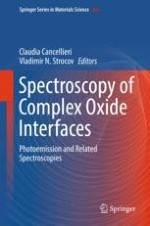2018 | Buch
Spectroscopy of Complex Oxide Interfaces
Photoemission and Related Spectroscopies
herausgegeben von: Dr. Claudia Cancellieri, Dr. Vladimir N. Strocov
Verlag: Springer International Publishing
Buchreihe : Springer Series in Materials Science
